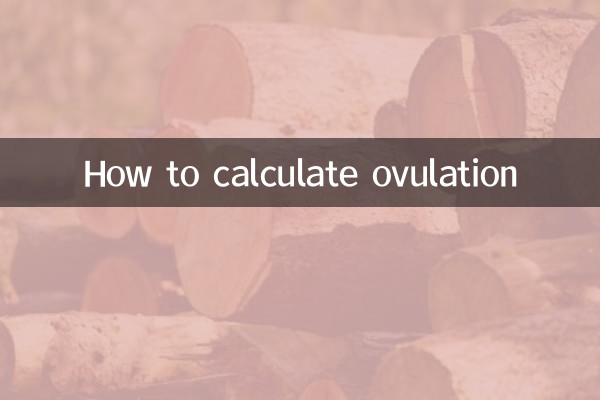How to calculate ovulation
Ovulation is an important stage in the female reproductive cycle, and accurate calculation of ovulation is critical for pregnancy preparation or contraception. This article will combine the hot topics and hot content on the Internet in the past 10 days to introduce you in detail how to scientifically calculate the ovulation period, and provide structured data for reference.
1. What is ovulation?

Ovulation is the process by which a woman's ovaries release mature eggs, usually in the middle of the menstrual cycle. Eggs can survive in the fallopian tube for 12-24 hours after release, while sperm can survive in the female body for 3-5 days, so the days before and after ovulation are the peak periods for conception.
2. Common methods for calculating ovulation period
1.calendar method: Suitable for women with regular menstrual cycles.
2.basal body temperature method: Judgment by daily measurement of basal body temperature changes.
3.cervical mucus observation method: Inferred based on changes in the properties of cervical mucus.
4.Ovulation test paper method: Predicted by detecting the peak value of LH hormone in urine.
5.B-ultrasound monitoring method: The most accurate but requires hospital examination.
3. Calculate ovulation period using calendar method
For women with 28-day menstrual cycles:
| menstrual cycle days | Ovulation day | Ovulation period |
|---|---|---|
| 28 days | Day 14 | Day 10-15 |
| 30 days | Day 16 | Days 12-17 |
| 35 days | Day 21 | Days 17-22 |
| 26 days | Day 12 | Days 8-13 |
4. Basal body temperature method data reference
Body temperature changes during normal ovulation cycle:
| period | body temperature range | Features |
|---|---|---|
| menstrual period | 36.3-36.5℃ | low temperature period |
| follicular phase | 36.3-36.5℃ | low temperature period |
| Ovulation day | 36.2-36.3℃ | lowest point |
| Luteal phase | 36.7-37.0℃ | high temperature period |
5. Cervical Mucus Observation Guide
| period | Mucus characteristics | Pregnancy probability |
|---|---|---|
| menstrual period | None/bloody | low |
| drying period | Less/thick | low |
| wet period | increased/milky | medium |
| Ovulation period | Large amount/egg white | high |
6. Usage data of ovulation test strips
LH hormone changes pattern:
| Test time | LH level | Predictive significance |
|---|---|---|
| 7-10 days after menstruation | 5-20IU/L | low |
| 1-2 days before ovulation | 40-80IU/L | peak |
| after ovulation | rapid decline | Completed |
7. Factors affecting ovulation
1.pressure: Chronic stress may cause ovulation to be delayed or stopped
2.diet: Extreme dieting can affect hormone secretion
3.sports: Excessive exercise may inhibit ovulation
4.disease: Diseases such as polycystic ovary syndrome can affect ovulation
5.age: Ovulation gradually becomes irregular after the age of 35
8. The latest technological assistance methods
According to the hot topics on the Internet in the past 10 days, the following technological methods have attracted much attention:
1.Smart bracelet monitoring: Prediction based on heart rate and body temperature data
2.Mobile APP algorithm: Analyzing personal cycles through big data
3.Saliva crystal testing: Microscopic observation of saliva crystal morphology
4.Smart toilet detection: A toilet that detects hormones developed in Japan
9. Things to note when calculating ovulation period
1. Record at least 3 menstrual cycle data
2. Combined use of multiple methods is more accurate
3. People with irregular menstruation are recommended to seek medical treatment.
4. Those who need contraception must use other contraceptive measures
5. In case of abnormal conditions (such as long-term anovulation), you should seek medical treatment promptly
10. Conclusion
Accurately calculating ovulation requires a combination of personal physical conditions and multiple methods. With the development of technology, there are now more convenient auxiliary tools to choose from. But no matter which method is used, understanding the changes in your body is the most important thing. I hope the data and methods provided in this article can help you understand your fertility cycle more scientifically.

check the details

check the details